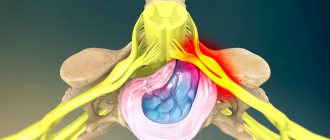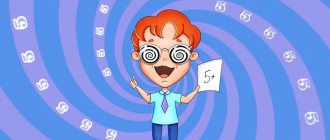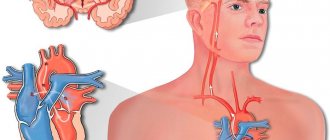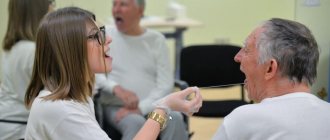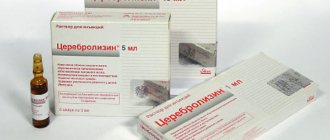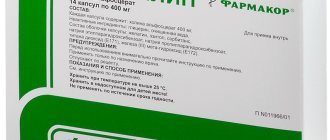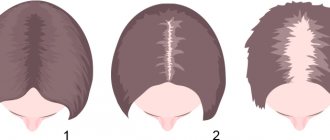Content:
- Psychoorganic syndrome, causes
- Complaints and symptoms of organic psychosyndrome
- Psychoorganic syndrome, clinical variants
- Diagnosis of organic psychosyndrome
- Psychoorganic syndrome, treatment
- Psychotherapy
- Rehabilitation
The human brain often suffers due to exposure to painful factors. As a result, the patient develops a pathological complex, called in medicine psychoorganic syndrome (PS, organic psychosyndrome). It is manifested by memory impairment, deterioration of intellectual capabilities, emotional disturbances and other mental disorders. Identified deviations must be treated with medication and psychotherapeutic methods in specialized clinics.
Treatment
The main method of treating psychoorganic syndrome is to eliminate its cause , that is, the disease that caused it. For direct treatment of a psychoorganic condition, nootropics are used that improve the patient’s mental activity, antioxidants and vitamins.
When emotional lability and aggression occur, various antipsychotic drugs can be used. All of the above methods of combating the disease reduce the manifestation of antipsychotic conditions, but the problem is that they do not directly affect the treatment of the underlying disease and do not eliminate its causes.
Psychoorganic syndrome, causes
A wide variety of pathologies can lead to the development of the disease.
Most often, doctors have to identify the following causative factors:
- Atrophic phenomena in the brain caused by senile processes.
- Atherosclerosis of blood vessels supplying brain tissue.
- Traumatic head injuries.
- Viral and bacterial infections affecting the central nervous system. Often specialists have to deal with meningitis and encephalitis.
- Tumor processes.
- Brain surgeries.
- Epilepsy.
- Diseases of the endocrine system – diabetes mellitus, damage to the thyroid gland.
- Cardiovascular pathology, strokes.
- Substance addiction.
Causes
The causes of psychoorganic syndrome are organic changes in brain tissue (that is, a violation of the structure of nervous tissue). Any mechanical, chemical or physical damage to brain neurons causes psychoorganic disorders.
Accordingly, there are many reasons:
- Traumatic brain injuries (consequences of brain injuries).
- Involution of the brain, age-related changes in the brain.
- Vascular diseases that occur with impaired blood supply to the brain.
- Alcoholism, drug addiction, substance abuse and their consequences.
- Atrophic diseases of the brain.
- Poisoning and intoxication of various origins and their consequences.
- Oxygen starvation of various origins.
Complaints and symptoms of organic psychosyndrome
The disease develops gradually. Minor manifestations become more obvious and are supplemented by new ones.
Patients are diagnosed with:
- Asthenic syndrome with weakness, emotional instability, headaches associated with weather changes, increased blood pressure, and attacks of tachycardia.
- A progressive decrease in the ability to concentrate.
- Absent-mindedness, inattention.
- Mental exhaustion and physical fatigue.
- Weakening of memory, loss of the ability to remember, forgetfulness, turning into amnesia.
- Confabulatory syndrome with distorted memories, fantasizing.
- Narrowing of intellect and usual range of interests. The patient loses the ability to isolate the main from the secondary.
- Dementia process.
- Impoverishment of speech.
- Loss of self-criticism, ethical distortions - a decrease in the ability to determine what is good and what is bad.
PS is characterized by Walter-Bühel's diagnostic triad:
- Increasing memory loss.
- Progressive intellectual impoverishment.
- Emotional and volitional deviations.
Psychoorganic syndrome is characterized by the following triad of symptoms: weakened memory, decreased intelligence, incontinence of affects (Walter-Bühel triad). Asthenic phenomena are often observed. Memory impairment affects all types to one degree or another. Hypomnesia, in particular dysmnesia, is most consistently detected; amnesia and confabulation are possible. Attention span is significantly limited and distractibility is increased. The quality of perception suffers; only specific details are captured in the situation. Orientation deteriorates, first in the environment, and then in one’s own personality. The level of thinking decreases, which is manifested by impoverishment of concepts and ideas, weakness of judgment, and inability to adequately assess the situation and one’s capabilities. The pace of thought processes is slow, torpidity of thinking is combined with a tendency to detail and perseveration.
Euphoric or highly foolish mood (less often, subdepressive mood) is accompanied by affective lability. The latter can reach the degree of incontinence of affect (affective incontinence). The mood easily changes for various seemingly insignificant reasons, for example, under the influence of the tone of the conversation (affective induction). Irritability, short temper, explosiveness, angry reactions, and affective viscosity predominate. General activity is falling. The level and intensity of motivation for productive activity decreases, previous interests are forgotten, and the horizons become impoverished. Individual character traits in relatively mild cases become sharpened, remain as if without a counterbalance, and psychopathic-like disorders (characteropathic version of the psychoorganic syndrome) come to the fore; with a more severe degree of disorder, premorbid personality characteristics are erased and leveled (an organic decline in the level of personality) up to their complete loss and the development of dementia—a demented variant of the psychoorganic syndrome. With Pick's disease, progressive paralysis, the tendency towards leveling the personality prevails from the very beginning. Asthenic phenomena in the structure of the psychoorganic syndrome are expressed to varying degrees. They are poorly represented or absent during atrophic processes in the second half of life (Pick's disease, Alzheimer's, senile dementia). In vascular, traumatic processes, and some endocrine diseases, on the contrary, they are often in the foreground. In patients with the consequences of traumatic brain injury, the vascular form of neurolues, irritability, explosiveness, and dysphoric reactions may dominate.
Organic patients usually do not tolerate heat well, changes in atmospheric pressure, often complain of headaches, pressure in the head, dizziness, and show signs of autonomic instability, sleep disturbances, and appetite.
Mental disorders are combined with a variety of often very pronounced neurological disorders (paresis, paralysis, loss of sensitivity, hyperkinesis, etc.). Higher cortical functions suffer (aphasia, apraxia, agnosia, acalculia, etc.). The severity of mental and neurological disorders does not always coincide.
Symptomatic lability is also observed - readiness for exogenous types of reactions under the influence of intercurrent diseases and various intoxications, increased sensitivity to psychotropic drugs. Of the psychotic reactions, the most. Delirious and twilight stupefaction are often observed. Symptomatic lability increases parallel to the severity of the psychoorganic syndrome. The tendency to psychogenic reactions, especially depressive ones, increases. In the initial period of some diseases (atrophic processes), endoform productive psychopathological disorders may occur: manic, depressive, delusional, hallucinosis (usually verbal, less often tactile and visual). Their duration ranges from several days to several years. As the psychoorganic syndrome progresses, the likelihood of their manifestation decreases, and the clinical picture of previously occurring psychosis is reduced.
There are diffuse and local (cerebral-focal) variants of psychoorganic syndrome. In the local variant, memory disorders (Korsakov's syndrome), intellect (Pick's disease, progressive paralysis, pathology of drives and affective disorders (tumors of a certain localization) may predominate, although such partial mental loss can be spoken of very conditionally. With damage to the convexitated frontal cortex, a “frontal syndrome" - aspontaneity in thinking, speech, behavior, reaching the degree of akinesia. Damage to the medial parts of the frontal cortex is accompanied by gross violations of higher forms of attention. Fronto-basal localization of the lesion is detected by the picture of moria or pseudoparalytic syndrome. With diencephalic localization of the process, anergy, drowsiness, depression or euphoria, dysphoria, disturbances of desires against the background of endocrine and metabolic disorders.Lesions at the level of the brain stem are manifested by torpidity of mental processes or impulsivity and explosiveness.
A distinction is also made between acute and chronic variants of psychoorganic syndrome. Acute - occurs suddenly, often following an exogenous type of reaction, lasts several days or weeks. It may be a single episode or recur and become chronic. The latter often begins unnoticeably and proceeds in different ways. In Pick's disease, Alzheimer's disease, Huntington's chorea, and senile dementia, psychoorganic symptoms progress and usually end in dementia. The course of the psychoorganic syndrome that occurs after traumatic brain injuries, encephalitis, approaches stationary - a residual version of the psychoorganic syndrome. A reverse development of symptoms is possible, of course, to a certain extent - a regredient version of the psychoorganic syndrome. With progressive paralysis and benign tumors, therapeutic remissions are possible. The severity of psychoorganic syndrome largely depends on age. Vulnerability to organic mental damage is most significant in old age.
Pseudoparalytic syndrome.
There is an elevated mood, with a predominance of euphoria, sloppiness, untidiness, gluttony, sexual disinhibition, swagger and unceremoniousness in relations with others, foolishness, obscene antics, nudity, rude, cynical jokes. Against the background of a significant mnestic-intellectual decline, fantastic confabulations, delusional ideas of greatness and wealth stand out. Sometimes there are states of anxious-agitated depression with elements of Cotard's delirium. There is no critical perception of mental disorders. Neurological symptoms often include dysarthria, anisocoria, sluggish photoreaction of the pupils, Gudden's symptom, tremor of the fingers and tongue, anisoreflexia, and neuritis. Occurs in various diseases: alcoholic encephalopathy, neurolues, brain tumors, symptomatic psychoses.
Psychoendocrine syndrome.
The most characteristic are a decrease in mental activity, changes in mood and desires. Mental activity decreases to varying degrees: from moderate asthenia to states of complete aspontaneity. At the same time, the core of personality is preserved, patients respond adequately to stimuli that are affectively significant for them. The pathology of drives comes down mainly to quantitative disturbances of libido, feelings of hunger and satiety, and thirst; impulsive desires occur. Of the affective disorders, atypical depression (with asthenia, apathy, dysphoria, anxiety and fear) and manic states (with anger, aggression) should be noted. Characterized by emotional instability. Depression is most often observed in Itsenko-Cushing's disease. Often a tendency to reactive depression is revealed. Mnestic-intellectual decline is observed with more severe endocrine disease. More often it manifests itself as amnestic syndrome. In the most severe cases, total dementia develops.
Psychoorganic syndrome, clinical variants
Observations of patients enable attending physicians to identify the dominant type of disease course.
Several types of the disease are identified:
- Asthenic. Sick people lose the ability to engage in any type of activity. They complain of severe fatigue, physical weakness, irritability, lack of performance and low mood. They are concerned about hypersensitivity to sounds, colors, and smells.
- Explosive. Patients are overly excitable, overly receptive to any information, and aggressive. Any contradiction towards themselves provokes an angry response from them, often with elements of hysteria. To alleviate their condition, they often take alcohol. Over time, they develop pettiness, pickiness, the formation of overvalued ideas and paranoia.
- Euphoric. Patients are prone to repeated sudden mood swings throughout the day. Bouts of gaiety and carelessness quickly turn to aggressive agitation.
- Apathetic. In the clinical state, patients are dominated by indifference to the environment, indifference to life. Against the background of weakening memory and intellectual narrowing, dementia develops.
Symptoms
Clinical manifestations of PS are caused by general asthenia of the body, mnestic disorders, impaired intelligence and emotional background.
- Asthenic signs of pathology - weakness, lethargy, emotional lability, excessive irritability, weather dependence, lack of concentration, decreased performance. Patients are concerned about frequent attacks of headache, dizziness, and thirst. They do not tolerate changes in atmospheric pressure, heat, stuffiness and complain of decreased appetite and sleep disturbances, as well as vegetative symptoms. In mild cases, asthenic signs are the only clinical manifestations. PS can be asymptomatic. In severe cases, clouding of consciousness, memory impairment and a decrease in intelligence, reaching the level of dementia, are added.
- Mnestic disorders are manifested by poor memorization of new data. Patients cannot retain them in their memory and recall already learned facts. In PS, the stages of memorization, retention and reproduction are affected. Dysmnesia, amnesia and confabulation are signs of PS. Disproportional damage to various aspects of memory gradually turns into a complete loss of individual events and is combined with false and fictitious memories. Often patients cannot correctly answer the question: what day, month and year is it today, as well as give the name and patronymic of the attending physician.
- Intellectual impairments are gradually coming to the fore. They consist of a lack of self-criticism, inappropriate behavior, and an inability to abstract from a specific situation. Patients become callous, tactless, dishonest and selfish. They think one-sidedly. As the syndrome progresses, the range of interests narrows. Patients commit wrong actions towards family and friends, and speak tactlessly about them. They perceive the surrounding situation inadequately, cannot grasp the entire situation, and only capture a certain part of what is happening. Sick children “stop” learning and cannot remember and reproduce information according to age standards. In severe cases, they develop dementia.
- In patients, speech function is impaired, vocabulary decreases, and stereotyped phrases often appear. They cannot highlight the main thing in a conversation and are often distracted by minor details. Torpidity of thinking is manifested by difficulty and slow expression of one’s thoughts. Patients repeat the same words several times.
- Emotional lability increases: patients react violently to current events, explosive emotions suddenly arise and disappear just as quickly. They do not tolerate emotional stress well and are unable to restrain their impulses, be it joy or anger. Patients often develop depressive states, hallucinosis, delusions, seizures, twilight disorders, and psychoses. Affective disorders are manifested by attacks of anger, melancholy and angry mood, an explosion of emotions, and mood swings. Patients do not tolerate any irritants well and cannot control their behavior and emotions. They are characterized by pettiness and self-centeredness, characterized by constant hysterics, tearfulness, touchiness, aggressiveness or irritability.
Clinical signs of the syndrome depend on the location of the lesion. When the brain stem is damaged, indifference, lethargy, passivity, and sometimes rudeness and euphoria predominate. Tumors and injuries of the frontal lobes are manifested by sloppiness, foolish behavior, and a tendency to flat humor. When the lesion is located in the occipital or parietal region, patients are bothered by persistent headaches and blurred vision.
Manifestations of the syndrome in childhood
The disease is extremely rare in children. However, according to the ICD-10 classification, its manifestations differ significantly from those observed in adult patients. This is due to the fact that most mental functions have not yet been fully developed. Depending on age, signs of the disease in children can vary significantly. Young children may experience delays in speech development. Children have difficulty remembering new words. Unstable mood, as well as sleep disturbances, should attract attention. Sometimes there is fussiness.
As for patients of preschool age, disturbances associated with the emotional-volitional sphere may be observed. The child's behavior is characterized by importunity and impulsiveness. Fine motor skills suffer, and the child’s inability to concentrate is visible. School-age children may experience cognitive impairment. In addition, increased self-criticism, as well as impulsiveness, should attract attention.
Diagnosis of organic psychosyndrome
Upon admission to the clinic for treatment, patients are offered a full range of studies.
The examination plan includes:
- Collection of data on the onset of the disease. In a difficult situation involving loved ones.
- Examination of appearance with physical methods (auscultation, palpation, percussion).
- Determination of neurological status.
- Laboratory and instrumental diagnostics (ECG, CT and MRI).
In some cases, it is necessary to involve specialized specialists in identifying the cause of the disease: an infectious disease specialist, a traumatologist, a neurologist, an endocrinologist.
Psychoorganic syndrome, treatment
After receiving all the examination data, it becomes clear which hospital requires care. When the causative factor is eliminated, mental disorders are removed in a psycho-neurological or drug treatment hospital.
To remove the symptoms of PS, drug treatment is used, including the use of:
- Groups of nootropics. These drugs play an important role in eliminating mnestic, intellectual and cognitive disorders. In order for them to give the desired effect, they must be prescribed for a long time and in large doses. Over time, patients experience a clear improvement under the influence of nootropic drugs.
- Neurotrophic agents with a protective effect. The metabolic and neuroprotective effect allows you to restore brain trophism and have a beneficial effect on all mental functions.
- Vitamins, especially group B, involved in the transmission of nerve impulses.
- Antioxidants that quickly remove toxic catabolites from cells.
- Sedative, eliminating emotional arousal and psychotic reactions.
- Tranquilizers that relieve fears.
As additional therapy, hormonal agents, anticonvulsants and others are used as indicated.
Psychotherapy
Features of the treatment of psychoorganic syndrome involve a combination of drug treatment and psycho-rehabilitation methods.
Psychotherapy includes:
- Individual psychocorrection sessions.
- The use of waking suggestion and hypnotic influence.
- Cognitive-behavioral form of influence on the psyche.
- Art therapy.
- Family format of psychorehabilitation.
Particular importance is attached to physiotherapeutic procedures, massage, and physical therapy exercises. Acupuncture provides a good therapeutic effect, eliminating many neurological symptoms.
Rehabilitation
The majority of patients with psychoorganic syndrome belong to the senile age period. At this age, most patients require special care and supervision by staff. Therefore, special conditions are created for them in the clinic.
After completing the course of treatment, clients benefit from counseling and psychological support. With the help of rehabilitation specialists, people with loss of social skills are taught self-care techniques. If necessary, relatives can call a doctor at home.
The degree of recovery and the percentage of restoration of lost functions depends on the cause of the disease. The best prognosis is given by post-traumatic types of psychoorganic syndrome, since the causative factor can be eliminated quite quickly. Destructive processes in the brain occur in the form of progressive disorders, so treatment and rehabilitation can only achieve relief.
The text was checked by expert doctors: Head of the socio-psychological service of the Alkoklinik MC, psychologist Yu.P. Baranova, L.A. Serova, a psychiatrist-narcologist.
CAN'T FIND THE ANSWER?
Consult a specialist
Or call: +7 (495) 798-30-80
Call! We work around the clock!
Manifestations
The psychoorganic syndrome manifests itself as the Walter-Bühel triad. This includes symptoms of memory deterioration, as well as a decrease in understanding of the environment. In addition, intellectual indicators very clearly deteriorate, and incontinence of affects also appears. Memory deteriorates in general, and each manifestation separately, while informative connections, memorization of information, as well as its functional storage and reproduction capabilities are lost. In addition, pseudo-reminiscence and confabulatory symptoms are possible, which can affect the perception of the outside world. The difference is that with pseudo-reminiscences, symptoms appear from the memories of the patient’s past, and with confabulations, the composition of the memories filling the brain becomes fantastic, which could not possibly have happened in reality.
The detection of intellectual impairments becomes more noticeable as the pathology progresses. At first, this is noticeable only in the inability to acquire new skills, then the loss of already acquired skills and abilities progresses. Skills are lost from new skills to old ones, that is, those that an individual had in his youth are retained for as long as possible, compared to newer ones.
A person with psycho-organic syndrome is characterized by its own characteristics, and the most noticeable is torpidity of thinking, which is manifested by pronounced inhibition and slowness of thought processes, as well as excessively high viscosity. In addition, a high level of “stuckness” appears and it is quite difficult to switch an individual to another topic, and it is difficult to maintain attention for a long time, because the patient gets tired quite quickly. Consistency is also quite difficult for such people to maintain.
Incontinence of affects is a separate, very striking symptom, characteristic of the described organic pathology, as well as of senile pathologies. It is very difficult to relieve and greatly complicates communication with such patients. Often this can be dysphoria, high irritability and aggressiveness. In addition, high tearfulness and melancholy angry impulses can be a frequent accompaniment of incontinence of affective impulses in psychoorganic syndrome.
Explosiveness of character and the inability to restrain impulses are very characteristic of this disease. It is quite difficult for such individuals to maintain a stable mood. It often jumps and changes, often regardless of the situation that surrounds the individual. Such emotional lability occurs in a momentary or rather rapid change in mood from cheerful to sad with hysteria and sobs.
Anger simply takes over the sick person, uniting with egocentrism and malice. In addition, the circle of interests, gradually decreasing, stops at one’s own person. A characteristic feature of this disease is weather dependence in its owners, which aggravates the individual’s suffering when the weather changes and temperature changes.

